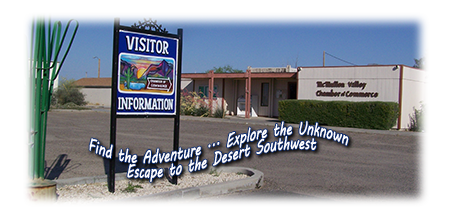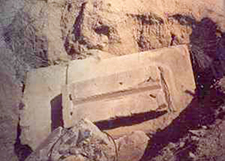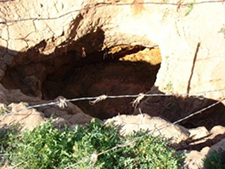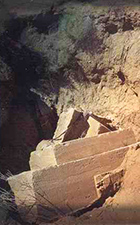
66710 Hwy 60
(PO Box 700)
Salome, Arizona 85348
Phone: (928) 859-3846
Email: mcmullencoc@tds.net
Providing online information for the communities of the Arizona Outback
since 1997 ... www.AZOutback.net

LIGHTHOUSE ON THE DESERT
Culling’s (Cullen’s) Well
Sometimes known as the "lighthouse in the desert", Cullen's Well was the only stable source of water between Wickenburg and Ehrenberg. There was a light at the top of a pole at the site to guide travelers at night, which is where the name "lighthouse in the desert" came from. Built by Charles C. Cullen, this well was started in the mid 1800's and continued well after Cullen's death in 1878. One story as to the light's origin was that a young man died within shouting distance of the well, and so the light was put up to prevent that from happening again. Today, only part of the well is left
There was a time, in Arizona’s vanished days, when the only means of communication between towns, mining camps and farming communities throughout the Territory was furnished by lonely and dangerous roads and trails, across deserts and over mountains, along which wild and desperate Apache foes were ever watching for unwary travelers or unprotected wagon trains. A number of these old routes of travel, more frequently used than others, became notable in Arizona’s historical annals.
On one of the lonely and barren stretches of desert highway, that which crossed the vast expanse of waterless country between Wickenburg on the Hassayampa and Ehrenberg on the Colorado, there stood a primitive but nevertheless effective “lighthouse”, which was operated for the purpose of saving lives, just as are the towering structures of modern days…. Arizona’s “lighthouse”, however, was known as the “Lighthouse on the Desert” and was located alongside of Culling’s Well, a famous stage station of early days.
The well furnished a fine and unfailing supply of water, was 200 feet or more in depth, and had been sunk into the desert sand at the only point where water could be secured. The water was cool and drawn up from the dark depths of the well in great bucket made from a wooden barrel
Some forty miles to the eastward of Culling’s Well was the nearest water in that direction, while it was at least thirty miles to any water to the north, south or west of Culling’s Well. Along this road passed much of Arizona’s travel. It was in those days, a widely used and historic highway
Culling’s Well was also a stage station where food and shelter could be obtained by the weary traveler who chanced to pass that way. It stood in the broad McMullen Valley, between the Harcuvars on the north and the Harquahalas on the south, and on the edge of Centennial Wash. The station had been established by Charles C. Culling, a native of England, in 1868. At Culling’s Well a road branched to the northeast leading to the Prescott country, while the main traveled highway continued westerly to the Colorado River and easterly to Wickenburg and the mining camps of that vicinity. It became, in time, an important stopping place for stage and wagon travel across that portion of the Territory. Mr. Culling, the original builder and operator of the well and station, died at that place in 1879 and was buried there, a large wooden cross marking today the location of his grave. (Note: The cross has since been stolen or burned.)
In the heat of summer it was a terrible route to travel and much of its way was “blazed” by the graves of those who had died of thirst while following its dreary, desolate length from the Hassayampa to the Colorado. A goodly number of unfortunate foot-travelers had discovered this at the cost of their lives and it is known that many of these, a dozen or more, died when only a few miles from the place where water could have been had in abundance.
In 1898, two miners expired by the roadside within sight of their goal and in the early part of 1900, in the month of February, a prospector’s body was found within rifle shot of the little desert station. Shortly after the latter incident, a young German lad, just after nightfall, came staggering to the watering tank near the station. Weak and exhausted from thirst, this youth had lain down to die when, happening to open his eyes, he saw rays of lamplight streaming through a window. Hope revived, and overcoming the desire to give up, he gained his feet and staggered toward the light, which fortunately, he had strength enough to reach and thus saved his life.
In Dec 2000, There was a disasterous flood in the area that apparently caved in the remains of the cement pieces. There was flood evidence for over a mile away from the Centennial Wash in the area and that wash resulted in fatal injuries at Wenden plus damages in the towns of Wenden, parts of Salome and some lesser towns way Southwards of Salome.

















